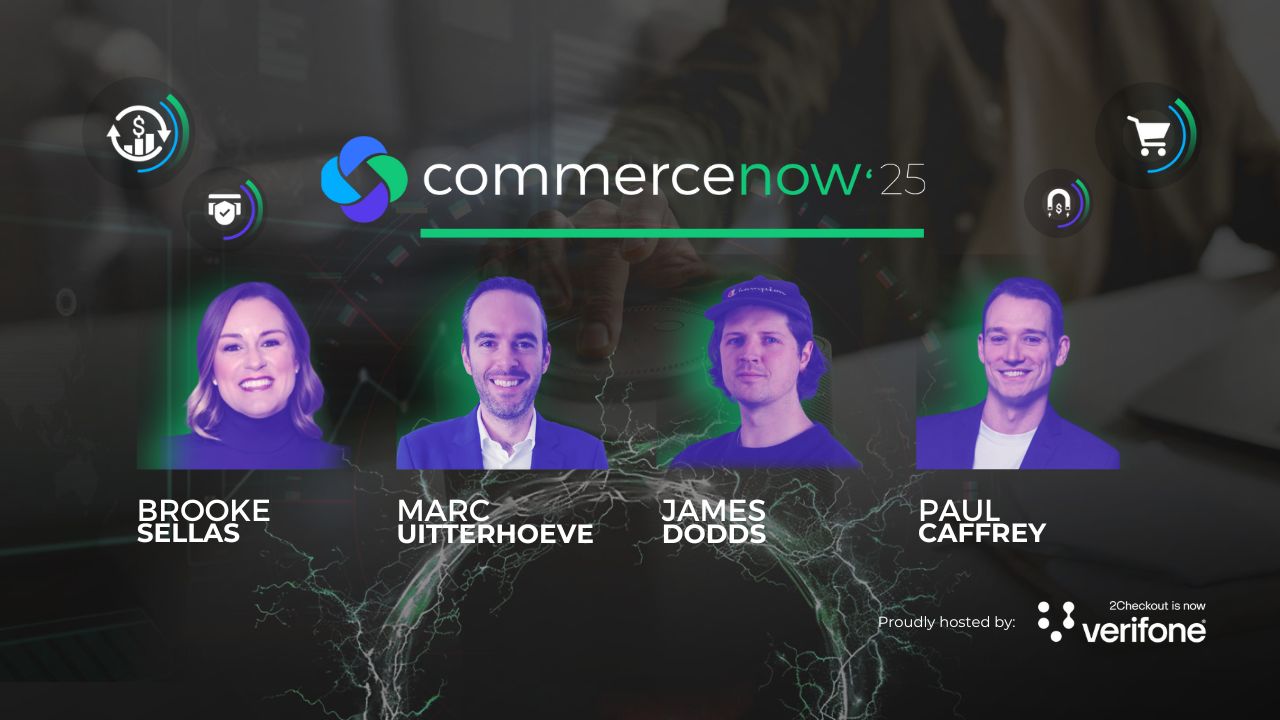Paid advertising is a fantastic way for eCommerce businesses to grow by promoting specific products with surgical precision. Before launching your first ad, however, there’s essential groundwork needed to give it the best possible chance of success.
Simply put, building a successful eCommerce advertising strategy requires more than just punting on some Facebook or Google ads. If you’re unprepared, these platforms can guzzle up your entire eCommerce advertising budget without a single conversion. Get it right, however, and it can be an incredibly fast and profitable approach.
You can break your strategy into roughly 4-5 steps:
- Agree clear and measurable objectives
- Create customer profiles
- Select preferred channels
- Construct your funnel
- Optimize, optimize, optimize*
*Optimization is technically a post-launch job, but part of a successful strategy is consciously preparing to optimize!
Many brands simply skip steps 1 and 2. This makes steps 3 and 4 exercises in futile guesswork, and renders optimisation virtually impossible. You don’t need to split your time equally between steps, but we implore teams to trust that each step is crucial.

Why advertising? Can’t I just do organic SEO?
The beauty of a strategic advertising campaign is that it’s extremely likely to work. Because you haven’t just thrown money at ads. You’ve carefully considered your customer, their biggest pains & priorities, and you’re solving all of that with perfectly-fitting products, all delivered via the most effective channel for them.
So while SEO is a powerful tool in its own right (eCommerce brands should definitely invest in this) it doesn’t have the surgical precision, speed, and specific targeting of advertising your eCommerce site.
|
What is the difference between eCommerce |
#1 – Goals to build your campaign around
How will we define the success of this campaign? Can we measure it?
It’s easy to overlook this “obvious” step: you’re clearly trying to sell a product! But without specific and measurable goals, you can’t know how successful any campaign really is. And worse, you can’t optimize after launch to improve your success since you don’t have specific metrics to compare.
So. How do you create goals that are relevant, concrete, and measurable?
- “Become the most popular UK perfume brand this spring”
- This is nice and aspirational for the company, but it’s not an advertising goal.
- “Promote our new Chanel perfume in the run up to Valentine’s Day”
- This is better, but success here would be people knowing about the product, not necessarily buying it.
- “Sell all 3,000 units of our new Chanel range in the 4 weeks prior to Valentine’s Day, with a minimum gross margin of 35%”
- This is what you’re looking for.
Do you see the difference?
There are two huge factors here. One is the ability to measure success in exact numbers—in this case by monitoring stock levels and average sale price. The other is that you’ve just given your team an ultra-specific goal to chase.
Throughout all strategic planning and execution, from copy to optimisation, you can constantly ask, “Does this help us meet our goal? and “Is this the best way to achieve our goal?”. This is powerful for keeping team members, ideas, schedules, and decisions well directed.

#2 – The customer that’s desperate for your product
Who are you selling to… and why them?
The number of business owners and marketing directors who cannot answer this question is staggering. “We think everyone could use our product” or “We’re targeting all women over 30”.
Uh-huh.
One of the tenets of successful advertising is specificity. Your ideal audience is not everybody. Even if you sell water, or painkillers, or music—your campaigns must target a specific persona or demographic. The more specific your audience, the more persuasive your copywriting and design can be, and the more likely you are to convert them.
|
Imagine you sell a branded painkiller. Targeting ‘everyone’, you go with a safe and universal message: |
All of this to say: when you advertise to everyone, you sell to no one.
Define your goals, make success measurable, and understand exactly who you’re targeting. Only then is it time for the flashy stuff: finding a channel, choosing your strategy, and pulling it all off!
You can identify your ideal customers through two main routes:
- Looking at the data – Depending on what data you have available from past customers, it’s possible to put together reliable “profiles” based on their buying habits, online activity, and demographic data.
- Surveying past customers – But by far the most effective approach is simply to survey and interview your customers. Find out what problem they were having, why they shopped with you, what they were looking for and much more. You’ll soon have a crystal-clear picture of who you should be targeting.
#3 – Choose your advertising channel
When most of us consider where to advertise for eCommerce, we think of Facebook, Instagram, Google, and YouTube. These are by far the biggest and most influential advertising platforms in existence (certainly for Europe and North America) and the de facto choice for most advertisers.
|
Did you know? Instagram is owned by Facebook and YouTube is owned by Google. These two players utterly dominate the paid ads space. |
These platforms are so ubiquitous that while every potential customer won’t be found there, the vast majority will. This seems to be true for virtually every type of eCommerce product.
Not only that, these personal data-driven platforms allow advertisers to target very specific profiles. Remember that bit about “advertise to everyone, sell to no one?”—with modern filtering tools, you can advertise to virtually any individual in a unique way, and it’s incredibly powerful.

Advertising with Google
Google is the granddaddy of all online advertising. They are omnipresent. In 2019, Google’s revenue from selling ads was $134.81 billion, and that number is growing every year.
Google’s huge success also comes from the variety of ads they offer, primarily:
- Search ads—These are the sponsored results you see on Google’s search engine pages.
- Display ads—Ads appear on targets’ commonly-visited websites, based on demographic data and previous online behaviour.
- Shopping ads—These can appear above search results, on the Google Shopping tab, on Google images, and even on partner websites.
Search ads are your bread & butter for generating sales. The general goal is to connect your ads to words and phrases which demonstrate high buying intent for the things you sell. For example, advertising on “buy a new electric car” is more likely to convert for an EV dealership than just “electric car”. However, “buy the new Kia e-Niro 64kWh” is probably better still.
However, the more sought-after a phrase is, the more expensive it becomes. Advertising on the word “Insurance”, for example, has cost upwards of $50 per click!
Therefore the biggest difficulty with Google search ads is the complexity of implementation. By paying a fee when searchers click your ad, the balance of keyword volume, cost, and relevance can get messy.
Because remember—the goal is not to get as many clicks as possible (costs can spiral wildly out of control) but as many highly-qualified clicks as possible.
If our EV dealership ran ads like, “Get the new Jaguar I-Pace for FREE” , they would get a LOT of clicks. But when the car actually costs £70,000, and no one buys anything, the dealership has just spent a huge sum of money with absolutely no return.
With an average conversion rate of 4%, Google search ads can be lucrative. But optimising this balance is complex work, and you will benefit hugely from bringing on expertise to guide you.
Advertising with Facebook & Instagram
The reason most companies use Facebook and Instagram is because they work. Facebook has over 1.8 billion daily users and in 2020, took home over $84 billion in ad revenue alone. For Instagram, it was somewhere around $12 billion.
Unlike Google (where ads are displayed based on specific search terms) Facebook and Instagram ads are targeted based on demographic data and user behaviour. Some marketers say that Google ads are better for sales and social media is better for branding—but trust us, Facebook ads are most definitely effective for drumming up sales.
The general process for running Facebook ads is as follows:
- Refine your target audience*: You can select the location, demographics, age, gender, interests, job type, and many other data points. Use these filters to identify your specific customer persona(s).
- Prepare your creatives: Make sure you’ve got several different designs and variations for both copy and design, length, and format. You can never predict which will perform best.
- Set your ad spend: Our advice is always to start small. Facebook ad costs can quickly spiral, so play small ball until you’re sure you’ve found a good audience with the right copy/designs, then ramp up the budget.
For Instagram, it’s common to turn a regular post (that’s getting unexpectedly high engagement) into a sponsored one for extra reach. The process for creating regular ads mirrors that of Facebook, and is also completed inside the Facebook Ads Manager.
*Probably the most brilliant feature of Facebook and Instagram advertising is retargeting. This means tracking those who visited you elsewhere (your website, for example) and then targeting them with your ads on social media. This can be incredibly powerful and is a huge attraction for eCommerce companies.

Advertising on YouTube
Like Instagram and Facebook, people spend a LOT of time here. But unlike those platforms (where ads appear intermittently and you can scroll right past) YouTube ads must be watched at least partially before the desired content launches.
These can be configured to last up to 20s without the user being able to skip, or much longer but with the caveat that after 5 to 15 seconds, users can choose to skip the ad. This is also the world’s premier hotspot for video ads, which can be exceptionally persuasive and engaging compared to simple text-based ads.
Build a robust, consistent funnel
A detailed guide on building out your entire funnel—from ideation to creating ads, landing pages, lead magnets, thank you pages, and follow-up communications—would make this page unmanageably long.
What we’ve prepared instead are some eCommerce advertising tips to help you avoid common pitfalls and get your conversions flowing early.
Use personalization—but don’t get creepy
It has long been proven that well-executed personalization is rocket fuel for eCommerce campaigns. But many marketers approach it from the wrong angle. They focus on making everything as personal as possible, rather than as effective as possible…through personalization. This is a critical, if subtle, difference.
For example, slapping the prospect’s name into a cart abandonment email no longer counts as personalization. Most consumers want personalized service—we just don’t like being aware of it. Compare these two:
- “Hi. As a thank you for being a loyal customer, we’ve credited your account with a 50%-off book voucher.”
- “Hi John Albrighton. How are you today? Since joining in 2014 you’ve bought 11 books in the ‘fantasy’ genre. Since it’s your 35th birthday tomorrow, here’s a 50%-off voucher for the new Rothfuss release!”
Just because you have data doesn’t mean you should share it. Example 1 has the same data as example 2, but leverages it in a more genuine, effective way. While example 2 is somewhat exaggerated, it’s true that many brands overshare and even deter customers when attempting personalization.

Invest time in post-click optimization
It’s easy to get tunnel vision when building a campaign. You’re so laser-focused on analyzing your audience and how to make them click, building brilliant & gripping ads…that you forget about what happens after they click.
If you have segmented ads, targeting specific pain points, solutions, or personas, then you cannot afford to drive all that traffic to the same page. And definitely not your homepage! It cracks the illusion and is poison for conversions.
|
Never link ads to your homepage? |
A good rule of thumb is to have a separate landing page for each category of ads. If your footwear eCommerce is targeting “No more blisters in high heels!” then its corresponding LP should expand on this exact pain point. It’s common for elements of these pages to be the same, but primary headers and main arguments must be consistent with the ad.
Don’t reinvent the wheel if you don’t have to
This is a minor point worth mentioning: pay attention to your competitors. If they’re doing something and you think it’s working, try it yourself. There’s a line not to cross (i.e. blatant plagiarism) but taking inspiration from high-performing competitors is just part of the game.
Prepare a system for optimization
The great thing about online advertising for eCommerce is that you can directly correlate ad spend with revenue. With good attribution, you can even see which specific ad sets are driving the most revenue. Optimising your ads will be time-consuming, but it will pay massive dividends. In essence, you’ll be doubling down on whatever’s working best, and reallocating budget from the worst performers.
It’s easy for unmonitored advertising campaigns to spiral out of control, with vast sums spent for rubbish results. But as long as you have regular reports on performance, it should be easy to consistently adapt and optimise.
What have been some successful advertising strategies for you and your business? We’d love to hear your vision!





